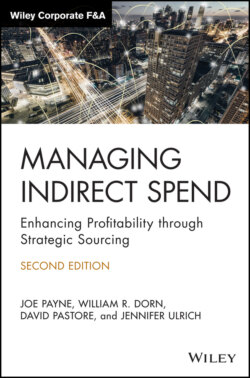Читать книгу Managing Indirect Spend - Joseph Payne, Joe Payne - Страница 60
IDENTIFYING SUPPLIERS
ОглавлениеPerhaps the most important step in the Research phase is supplier identification. It simply would not be possible to engage in a Strategic Sourcing initiative without a supply base. Oftentimes, however, professionals do not take as much time to identify suppliers as they should. Identifying suppliers can be a tedious task—a wealth of information is available online, but it's often overwhelming in scope and difficult to sort through. In an effort to save time (and sanity), many professionals adhere to the three‐bid rule, meaning they only ask three suppliers to provide a quote. The three‐bid concept normally ensures you are not getting completely gouged with poor pricing, but it by no means ensures you are going to get the best price or service.
Others identify more than three suppliers but may choose to arbitrarily exclude certain suppliers from their list. For instance, if an end user expressed that a certain supplier used to have the business, but that the relationship ended due to a dispute or even just a poor experience, you may be tempted to avoid the supplier. However, former suppliers often have good insight into the needs of your organization, and over time, they may have taken efforts to correct the issues that had resulted in their termination. If nothing else, they may be able to provide some previously unrealized insights into the markets in question.
Similarly, for common or well‐understood categories, it's easy to be lured into the trap of only including the well‐known suppliers or only those who have already been aggressively pursuing your organization's business. This often means missing out on suppliers who could be a perfect match. When a satisfactory quantity of suppliers is identified, research is discontinued, potentially omitting suppliers who could be a great match and may perform best from a cost and service perspective.
Another common problem occurs when organizations prepare an RFI or RFP and send it to dozens of suppliers, but fail to communicate properly with those suppliers. The suppliers who receive an unsolicited bid document with no further communication from the prospective buy may perceive the document as a “phishing” attempt to discover their pricing range for a product or service. In these instances, they won't bother providing a proper response.
Overall, the goal of supplier identification is to create a rather comprehensive list of supplier names, contact information, and other relevant data. During the RFx phase of the initiative, you begin to narrow this down to a short list. Many tools are available that can be used to help identify suppliers, and many of these tools are discussed in Part Two.
